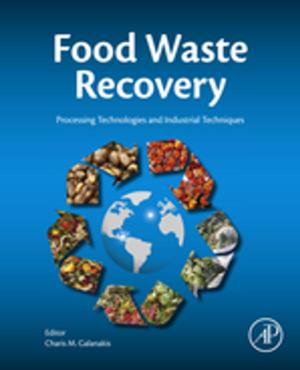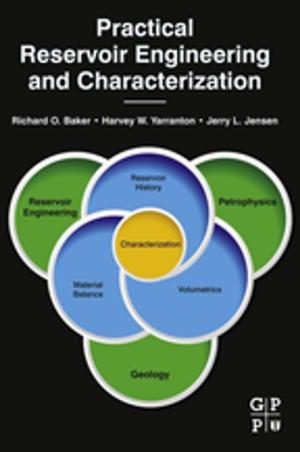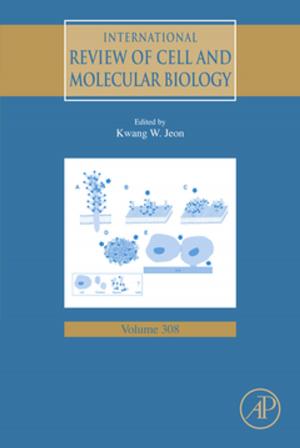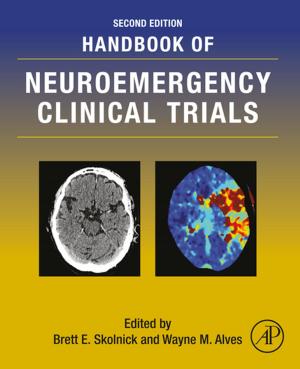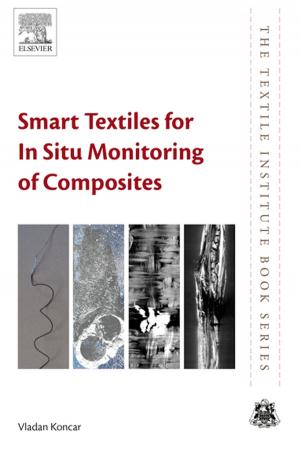Ecotoxicology Essentials
Environmental Contaminants and Their Biological Effects on Animals and Plants
Nonfiction, Science & Nature, Science, Chemistry, Biological Sciences, Environmental Science, Nature| Author: | Donald W. Sparling | ISBN: | 9780128019610 |
| Publisher: | Elsevier Science | Publication: | April 18, 2016 |
| Imprint: | Academic Press | Language: | English |
| Author: | Donald W. Sparling |
| ISBN: | 9780128019610 |
| Publisher: | Elsevier Science |
| Publication: | April 18, 2016 |
| Imprint: | Academic Press |
| Language: | English |
Ecotoxicology Essentials: Environmental Contaminants and Their Biological Effects on Animals and Plants provides a fundamental understanding of this area for students and professionals in ecotoxicology, ecology, conservation, chemistry, public health, wildlife management, fisheries, and many other disciplines. Although new chemicals and potential problems are developed every year, a basic education is essential to address these new challenges, and this work gives such training. Written with the regulatory framework in mind, the material guides readers on modelling, how to conduct assessments, and human and wildlife risk, focusing on effects on animals rather than transport of chemicals. Simple discussions of chemistry are complemented by coverage on the behavior of the animal, dynamics of the ecosystem, real-life situations like drought, and predators in the system – i.e., the natural system versus the lab setting.
The book’s first section contains chapters on the principles of contaminant toxicology including a brief history of the science of ecotoxicology, basic principles of the science, testing methods, and ways of determining if animals have been exposed to either acute or chronic concentrations of contaminants. The second section deals with the primary classes of contaminants including their chemical characteristics, sources, uses, and effects on organisms. The third section focuses on more complex issues such as the regulation of pollution, population and community effects, risk assessment and modelling.
- Uses examples from both aquatic and terrestrial environments and species
- Includes a Terms to Know section and a list of study questions in each chapter, fostering a greater understanding of the issues
- Focuses on the effects of contaminants on wildlife while providing enough chemistry to allow a detailed understanding of the various contaminant groups
- Emphasizes natural examples and 'real' species, rather than laboratory studies on only a handful of organisms
- Features case histories, detailing actual events that include aspects of how the contamination occurred and its effects on wildlife
- Provides material from a wide variety of international sources
Ecotoxicology Essentials: Environmental Contaminants and Their Biological Effects on Animals and Plants provides a fundamental understanding of this area for students and professionals in ecotoxicology, ecology, conservation, chemistry, public health, wildlife management, fisheries, and many other disciplines. Although new chemicals and potential problems are developed every year, a basic education is essential to address these new challenges, and this work gives such training. Written with the regulatory framework in mind, the material guides readers on modelling, how to conduct assessments, and human and wildlife risk, focusing on effects on animals rather than transport of chemicals. Simple discussions of chemistry are complemented by coverage on the behavior of the animal, dynamics of the ecosystem, real-life situations like drought, and predators in the system – i.e., the natural system versus the lab setting.
The book’s first section contains chapters on the principles of contaminant toxicology including a brief history of the science of ecotoxicology, basic principles of the science, testing methods, and ways of determining if animals have been exposed to either acute or chronic concentrations of contaminants. The second section deals with the primary classes of contaminants including their chemical characteristics, sources, uses, and effects on organisms. The third section focuses on more complex issues such as the regulation of pollution, population and community effects, risk assessment and modelling.
- Uses examples from both aquatic and terrestrial environments and species
- Includes a Terms to Know section and a list of study questions in each chapter, fostering a greater understanding of the issues
- Focuses on the effects of contaminants on wildlife while providing enough chemistry to allow a detailed understanding of the various contaminant groups
- Emphasizes natural examples and 'real' species, rather than laboratory studies on only a handful of organisms
- Features case histories, detailing actual events that include aspects of how the contamination occurred and its effects on wildlife
- Provides material from a wide variety of international sources

